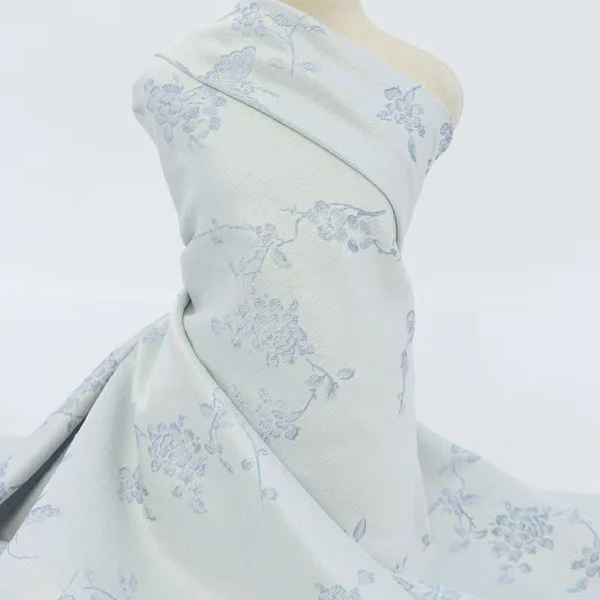Lace Fabric: The Timeless Beauty of Delicate Design
2025-03-27
Lace fabric has been a symbol of elegance and sophistication for centuries. Its intricate patterns, delicate texture, and versatility make it a timeless choice for a wide range of applications, from fashion design to home decor. Whether used for wedding gowns, decorative curtains, or accessories, lace fabric never fails to add a touch of beauty and refinement to any creation.
What Is Lace Fabric?
Lace fabric is a delicate, open-weave textile that is typically made from threads of cotton, silk, nylon, or polyester. The design of lace is characterized by intricate patterns, often featuring flowers, vines, or geometric shapes, and is created through various techniques such as knitting, crocheting, or machine-made processes. The result is a soft, breathable material that can be both transparent and ornate, depending on the design.
Types of Lace Fabric
Lace fabric comes in several varieties, each with its own unique characteristics and uses:
1. Chantilly Lace: Known for its fine threads and delicate floral patterns, Chantilly lace is often used in bridal wear and high-fashion garments. It is typically made from silk or nylon.
2. Alencon Lace: This lace has a more structured feel with a distinctive cordonnet thread outlining the pattern, often used in wedding dresses and formal attire.
3. Venise Lace: Known for its heavier, more textured feel, Venise lace features a cord-like edge and is commonly used in accessories such as necklaces, headpieces, and wedding veils.
4. Eyelet Lace: Eyelet lace features small cut-out holes in the fabric, creating a light and airy effect. It is commonly used in summer clothing and home decor items.
5. Guipure Lace: Unlike other types of lace, guipure lace is made without a net base, with the motifs connected by bars or plaits. This lace is often used for decorative trim on garments.
How Lace Fabric Is Made
Lace fabric can be produced using several methods, depending on the desired end product:
1. Handmade Lace: Traditional handmade lace is created through needlework or bobbin lace-making techniques, where threads are interwoven to form intricate patterns. This process requires patience and skill, and the resulting lace is highly valued for its craftsmanship.
2. Machine-Made Lace: In modern times, lace is often produced using lace-making machines that automate the process of weaving and knotting threads. These machines can create a variety of patterns more quickly and efficiently than handmade techniques.
3. Crochet Lace: Crochet lace is created using a hook to interlock threads into various patterns. This type of lace is often used in home decor items like tablecloths, doilies, and bed linens.
Applications of Lace Fabric
Lace fabric’s versatility allows it to be used in many different areas of fashion and decor. Some of the most popular applications include:
Fashion Design
Lace has been a staple in high-fashion for centuries, often used in gowns, blouses, dresses, and undergarments. It’s commonly used for special occasions like weddings, galas, and evening wear, where its delicate and romantic aesthetic makes a statement.
Home Decor
Lace can also be used to create elegant curtains, tablecloths, bedspreads, and pillowcases. Its ability to filter light while still offering privacy makes it ideal for decorative window treatments.
Accessories
From scarves to handbags, lace is often incorporated into accessories for a sophisticated look. Lace trim can add a touch of vintage charm to jewelry, hairpieces, and gloves.
Crafting
Crafters love using lace for projects such as scrapbooking, card making, and embellishing garments. Its versatility makes it a great choice for adding a delicate touch to any creation.
Caring for Lace Fabric
Lace is delicate and requires gentle care to preserve its beauty. Here are a few tips for maintaining lace fabric:
- Hand wash in cold water using a gentle detergent.
- Avoid wringing or twisting the fabric to prevent damage.
- Air dry lace items by laying them flat or hanging them to dry. Avoid using a dryer.
- For machine-made lace, use a mesh laundry bag to protect the fabric during washing.
Why Lace Fabric Remains Timeless
Lace’s enduring popularity can be attributed to its ability to add an element of refinement and delicacy to any item. Whether used in fashion, home decor, or accessories, lace exudes a sense of romanticism and elegance that other fabrics simply cannot match. The combination of intricate design and softness makes lace an essential part of both classic and contemporary styles.
Conclusion
Lace fabric’s beauty lies in its intricate patterns and delicate nature. Its rich history and versatility continue to make it a popular choice for a variety of applications in fashion, home decor, and crafts. Whether used for special occasions or as part of everyday attire, lace fabric adds a timeless, elegant touch that never goes out of style.



